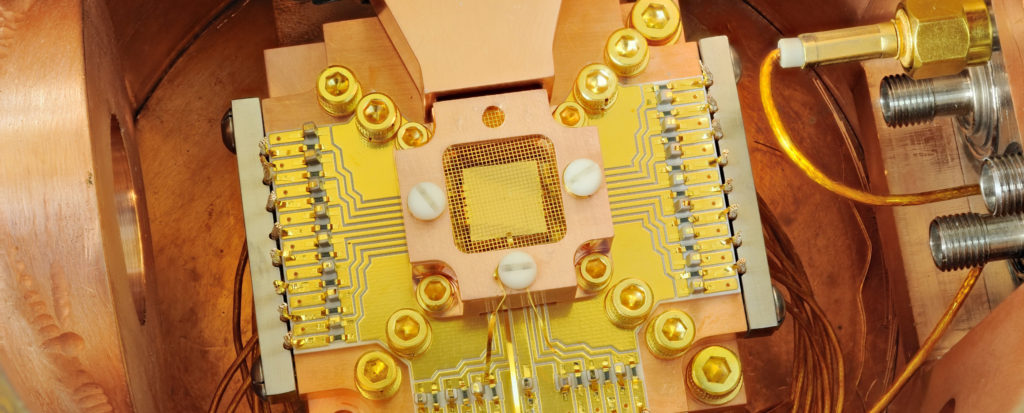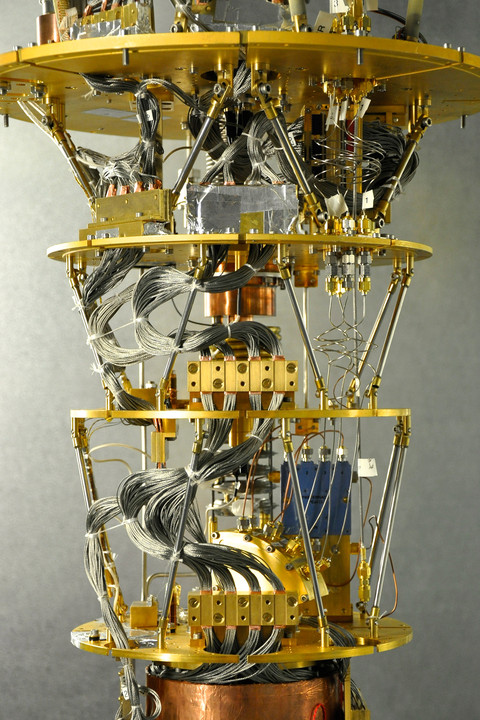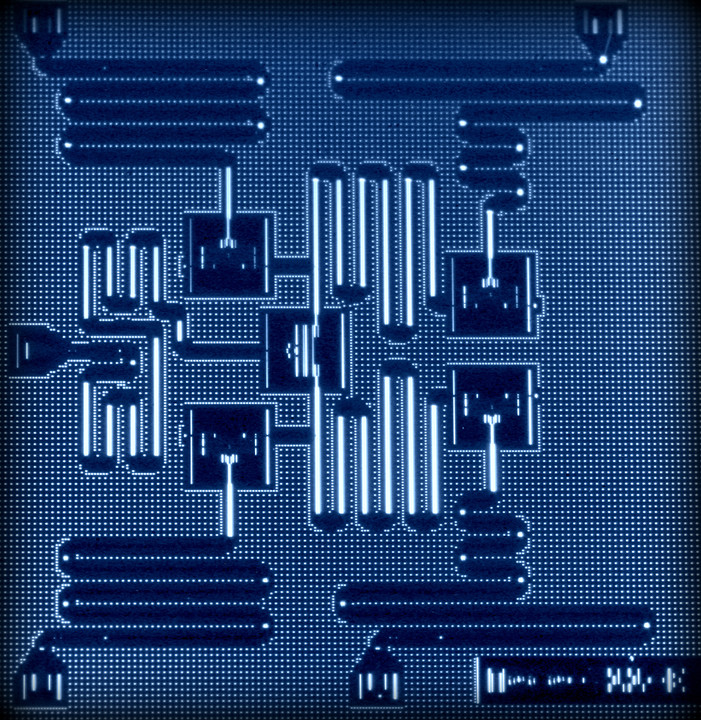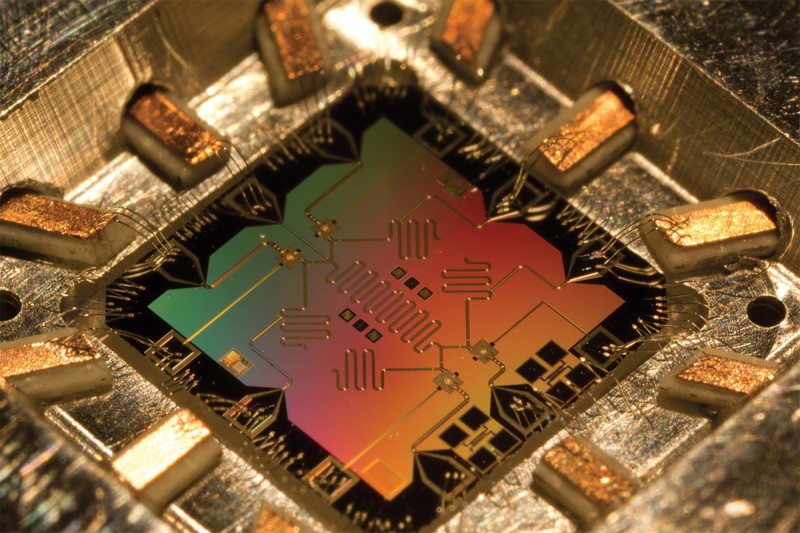Winfried Hensinger is the director of the Sussex Centre for Quantum Technologies in England, and he has spent a lifetime devoted to studying the ins and outs of quantum mechanics and just what it can do for us. When Hensinger first started in the field, quantum computing was still very much a theory, but now it is all around us, and various projects are within reach of creating a universal quantum computer. So, now that scientists are taking quantum computing more seriously it won’t be long before the field begins to explode and applications that we never even imagined possible will become available to use.
Quantum computing works with information that is stored in qubits which have a value of either 1, 0, or any quantum superposition of the two states. The notion behind quantum superposition is that a quantum object has the ability to occupy more than one state until it’s measured. Because quantum objects are used in this kind of computing, any given set of quantum values can represent much more data than binary ever could because data is not limited to 1’s and 0’s.
–
Currently, researchers are still battling it out to create a successful quantum computer, but they still have a way to go. Systems have been constructed that has access to a few qubits and are good for testing hardware configurations or running some algorithms, but are very expensive and still very basic. When Hensinger was asked about the current changes within quantum computing, he simply replied, “It used to be a physics problem. Now, it’s and engineering problem.”
Two possibilities from researchers of what the foundation of quantum computing should look like are superconducting qubits and trapped ions. Superconducting qubits relies on supercooled electrical circuits and could bring many advantages to the manufacturing process when making them on a mass scale. The trapped ions method refers to a method that can cope with environmental factors but has trouble controlling lots of charged atoms within a vacuum. Hensinger supports both of these implementations and believes they will both produce a quantum computer. During his research, Hensinger’s results showed that the trapped ions method was slightly ahead of the competition.
However, Hensinger has also created his own method with the help of his team at Sussex and focuses on individually controlled voltages that are needed within the quantum circuit. He says, “With this concept, it becomes much easier to build a quantum computer. This is one of the reasons why I’m very optimistic about trapped ions.” Hensinger and co also chose to work with trapped ions as it works at room temperature, unlike the superconducting qubits method.
IBM, on the other hand, has chosen to work with superconducting qubits as the basis for their quantum work. Their quantum computer consists of a five-qubit processor that’s contained within a printed circuit board. The refrigerated system contains control wires that transmit microwave signals to the chip and send signals out through various amplifiers and passive microwave components where they are interpreted by a classical computer for easy reading of the system’s qubit state from outside the refrigerated system. All of this takes up more than 100 square feet within IBM’s lab, and that is because of the significant cooling that needs to be done.
Jerry Chow, the manager of the Experimental Quantum Computing team at IBM, says that the reason IBM uses superconducting qubits is more to do with previous research using this technique that had been done. And, as Chow explains, “I think superconducting qubits are really attractive because they’re micro-fabricate. You can make them on a computer chip, on a silicon wafer, pattern them with the standard lithography techniques using transistor processes, and in that sense have a pretty straightforward route toward scaling.”


So, one thing that we know for certain is that when it comes to quantum computing both superconducting qubits and trapped ions have emerged as the two techniques to take note of. Quantum computing will develop further over the next few years, and it’s in everyone’s best interests if large-scale quantum computers aren’t tied down to just one possible solution. Hensinger for one is definitely in support of both ideas and notes, “It’s healthy to have different groups trying different things.” At the moment, it’s still hard to say exactly what quantum computing will be used for in the future, but algorithms are constantly being worked on to see what hardware could be capable of using quantum computing.
A quantum algorithm is a recipe that is usually written in a mathematical format and is a solution for solving a particular problem. But, because quantum computing does not work in the same was as classical computing, algorithms that are made from binary are useless, so new ones need to be made and that is something that Krysta Svore and team at Microsoft’s Quantum Architectures and Computation Group focuses on. She states, “We have a programming language that we have developed explicitly for quantum computing. Our language and our tools are called LIQUI|>. LIQUI\> allows us to express these quantum algorithms, then it goes through a set of optimizations, compilations, and basically rewrites the language instructions into device-specific instructions.”
Svore and team at the Quantum Architecture and Computation Group have access to a simulated quantum computer that is currently running on a classical system. This allows them to debug existing quantum algorithms, as well as design and test new ones and helps the hardware team to see how quantum computers could be used in practice. However, IBM has taken things one step further. As well as having a successful simulation that they can work on they have also launched the IBM Experience which is an online interface that allows students and enthusiasts to have a go themselves with a five-qubit system and run their own algorithms and experiments from the cloud-based platform.

One of the most famous applications in the world of quantum computing comes in the form of Shor’s algorithm. Ryan O’Donnell of the Carnegie Mellon School of Computer Science in Pittsburgh said, “In 1997, Shor showed an algorithm for a quantum computer that would be able to factor such numbers very efficiently”, when referring to numbers with thousands of digits. Ever since then it has become a kind of measuring stick for the advancement of the whole field. One of the current applications involving quantum hardware is to research different areas of science further.
Although quantum computing is going to become more common over the next few years, it’s not suddenly going to become the next mainstream technology that is found in every office and home. But, the technology in one form or another may do. In the next ten years, quantum computing will develop although its exact development may not be immediately obvious to the general public as at the moment, the promise of quantum computing is much more advanced then where researchers are with it. But, eventually, it will revolutionize computing.
More News To Read
- Scientists Turn Food Waste into Energy Storage Devices
- Out with Dow Solar Shingles and in with Elon Musk’s Solar Roofs
- Solar Power Set To Reach Record Levels in Next 15 Years
- Get Ready To Have Your Personal Desktop Waterjet Cutter
- Scientists Discover “Jumping Genes” Have The Ability to Develop Parts of the Brain
- Sony’s PS4 Is the Next Host for VR Porn?











